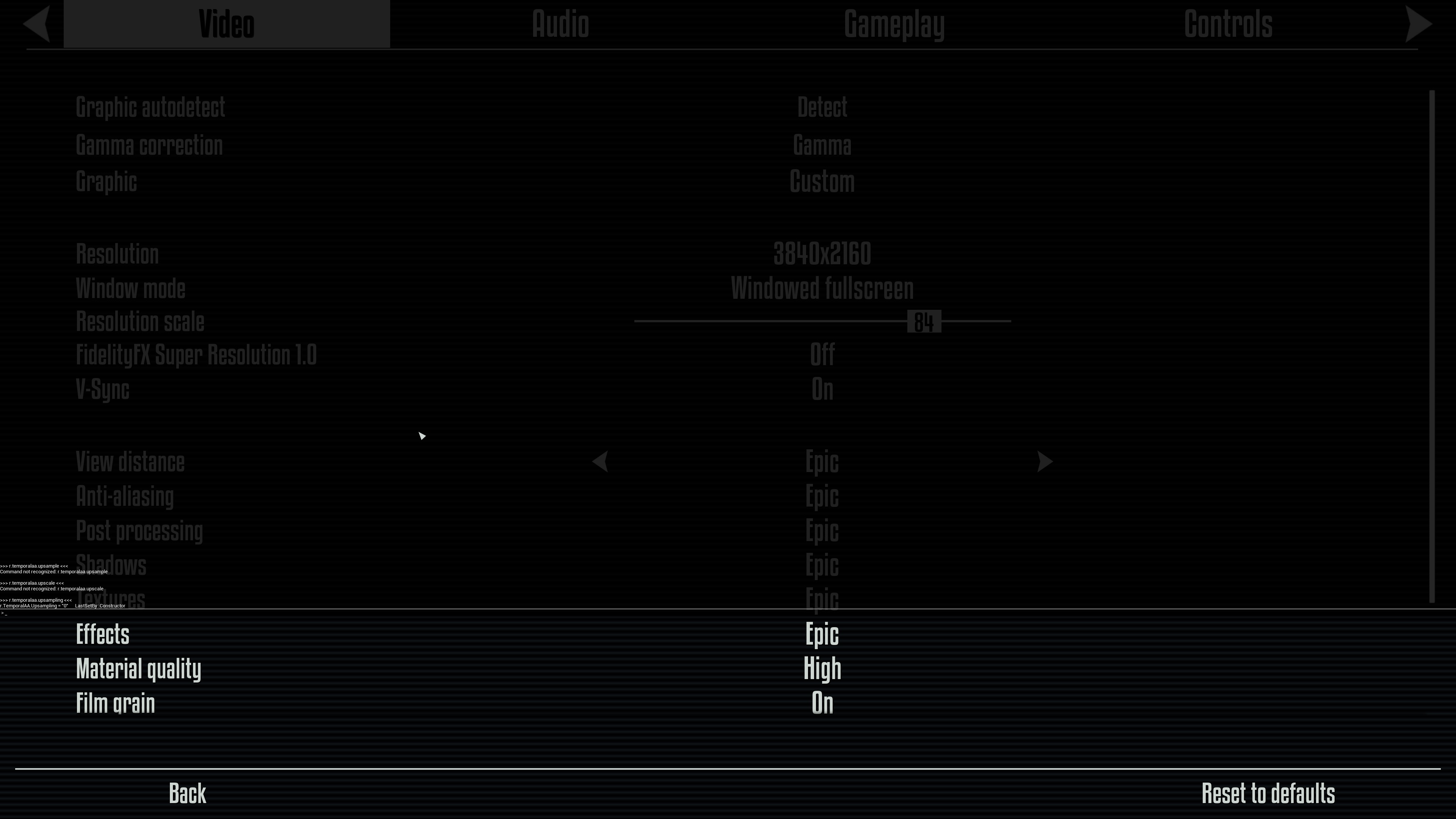snc
Veteran
https://www.pcgameshardware.de/commoncfm/comparison/clickSwitch.cfm?id=164183
in terminator fsr gives better results than taau
in terminator fsr gives better results than taau
I really don't get the différence between upscaling and reconstructing for the end user. From a tech POV, yes I get it, but if the PQ is here in the end, it doesn't really mater ?
I really don't get the différence between upscaling and reconstructing for the end user. From a tech POV, yes I get it, but if the PQ is here in the end, it doesn't really mater ?
FSR doesnt deliver the PQ from lower base resolutions. Maybe it is acceptable when you cant compare it to other techniques. For example DLSS in Watch Dogs Legions:
and FSR in Godfall:
Performance setting uses only 1/4 of the pixel of the native image. DLSS can reconstruct a lot of information, FSR is just upscaling a low res low information image.
HWUB tested at least also Anno 1800, not just Godfall. The DF comparison between modes was made with performance setting (the one even AMD did not want their customer to use) and while there are some areas (transparency) looking bad, there are some points (the tree, the bricks on the wall) where the FSR shot looked better, at least to me. If engines have their own temporal upscaler, well, the question is why almost no one use it (except maybe the upcoming UE5). maybe because there are temporal artifacts? FSR is far from being a good solution (for now, future iterations maybe based on their patent and more may improve this), but in some cases it could be a good compromise, especially on dated cards.
So is their decision to include FSR. AMD is using money and marketing to nudge them to adopt FSR ... no one is using money and marketing to push TAAU on PCs, not even Epic. It will get nudge nudge wink winked to death on PC while being the more competitive option.TAAU is something in control of developers, not AMD.
The 5700 XT averages 52.6 FPS at 4K in TechpowerUP's suite. So it could be useful for hitting 60 FPS more consistently.Quality and Ultra Quality are not useful for people with older GPUs. FSR doesnt solve existence problems for them. Ultra Quality in 4K is 1660p as the base resolution. And this is the only quality setting from FSR which results in accectable image quality. Dont know how many users with older GPUs (5700XT or RTX2070 for example) get enough frames in 1660p...
How good is a temporal component with ever older temporal samples? Are they really temporal or are they rather successive? What I mean is, with low fps rates in the 20s, your first sample from, say, 8 frames ago is notably older (temporally speaking) than if you were to apply this technique to a setup running at 120 fps. Is there a time-based cutoff?
There are clear and obvious IQ degradations in Godfall even on UQ preset, this is shown in pretty much every other publication on FSR so far. HUB are just being themselves again.I think HWUB was a little premature in their stamp of approval based on just Godfall. The real test for FSR will be in games with fine detail (thin lines, wires etc) that benefit from temporal reconstruction.
The card launched at $300 and was $250 only for bare minimum models.The 1060 with 6 GB was available for much of it's lifetime for 230-250 dollars/Euro (here: with VAT, so basically equal)
Does it? Put the same amount of sharpening on TAAU output and compare scenes with temporal aliasing.https://www.pcgameshardware.de/commoncfm/comparison/clickSwitch.cfm?id=164183
in terminator fsr gives better results than taau
Well that’s the thing. AMD acknowledges that FSR is no good upscaling 1080p to 4K while we see TAAU do an acceptable job doing just that. TAAU also runs on older hardware. So in the end why not just go with TAAU which has a much more useful range of scaling ratios?
The FSR advantage of being easier to implement in a game doesn’t seem to be that helpful given TAA is basically in everything anyway. So FSR is really only easier to add to a game that doesn’t use TAA and that’s a shrinking population.
So is their decision to include FSR. AMD is using money and marketing to nudge them to adopt FSR ... no one is using money and marketing to push TAAU on PCs, not even Epic. It will get nudge nudge wink winked to death on PC while being the more competitive option.
No, frames are being merged recursively.Is there a time-based cutoff?
Does it? Put the same amount of sharpening on TAAU output and compare scenes with temporal aliasing.
PCGH here is unfortunately wrong about Terminator Resistance's res slider using TAA Upsample. Here if you inject Unreal Engine Unlocker into the game and set the res slider below 100, you can see that TAA Upsampling is set to 0:https://www.pcgameshardware.de/commoncfm/comparison/clickSwitch.cfm?id=164183
in terminator fsr gives better results than taau

Yeah, I thought it looked way too blurry to be TAAU.PCGH here is unfortunately wrong about Terminator Resistance's res slider using TAA Upsample. Here if you inject Unreal Engine Unlocker into the game and set the res slider below 100, you can see that TAA Upsampling is set to 0:
So their image comparison is FSR against the standard non-taa upscale.
Well that’s the thing. AMD acknowledges that FSR is no good upscaling 1080p to 4K while we see TAAU do an acceptable job doing just that. TAAU also runs on older hardware. So in the end why not just go with TAAU which has a much more useful range of scaling ratios?
The FSR advantage of being easier to implement in a game doesn’t seem to be that helpful given TAA is basically in everything anyway. So FSR is really only easier to add to a game that doesn’t use TAA and that’s a shrinking population.
